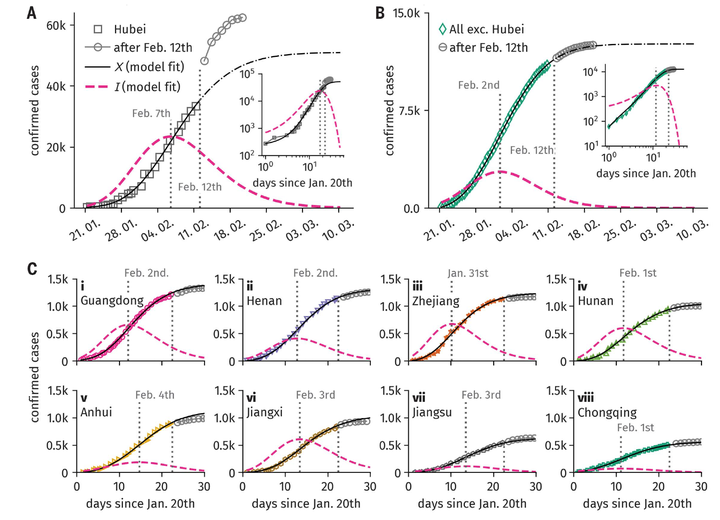Effective containment explains subexponential growth in recent confirmed COVID-19 cases in China
Abstract
The recent outbreak of coronavirus disease 2019 (COVID-19) in mainland China was characterized by a distinctive subexponential increase of confirmed cases during the early phase of the epidemic, contrasting with an initial exponential growth expected for an unconstrained outbreak. We show that this effect can be explained as a direct consequence of containment policies that effectively deplete the susceptible population. To this end, we introduce a parsimonious model that captures both quarantine of symptomatic infected individuals, as well as population-wide isolation practices in response to containment policies or behavioral changes, and show that the model captures the observed growth behavior accurately. The insights provided here may aid the careful implementation of containment strategies for ongoing secondary outbreaks of COVID-19 or similar future outbreaks of other emergent infectious diseases.
 Case numbers in Hubei compared to model predictions
Case numbers in Hubei compared to model predictions